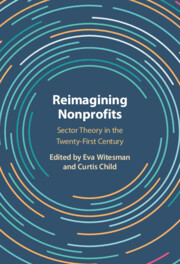Book contents
- Reimagining Nonprofits
- Reimagining Nonprofits
- Copyright page
- Contents
- Figures
- Tables
- Contributors
- Acknowledgments
- 1 An Invitation to Rethink the Nonprofit Sector
- Part I Overviews
- 2 An Overview of Nonprofit Sector Theories
- 3 The Prevalence of Traditional Nonprofit Sector Theories in Research
- 4 What Makes Good Nonprofit Sector Theory?
- Part II Reflections and Refinements
- Part III New Directions
- Part IV Conclusion
- Index
- References
4 - What Makes Good Nonprofit Sector Theory?
from Part I - Overviews
Published online by Cambridge University Press: 11 January 2024
- Reimagining Nonprofits
- Reimagining Nonprofits
- Copyright page
- Contents
- Figures
- Tables
- Contributors
- Acknowledgments
- 1 An Invitation to Rethink the Nonprofit Sector
- Part I Overviews
- 2 An Overview of Nonprofit Sector Theories
- 3 The Prevalence of Traditional Nonprofit Sector Theories in Research
- 4 What Makes Good Nonprofit Sector Theory?
- Part II Reflections and Refinements
- Part III New Directions
- Part IV Conclusion
- Index
- References
Summary
This chapter explores the nature of nonprofit-sector theory. To do this, we first examine what we theory, and what we mean by nonprofit-sector theory. We also propose a framework for evaluating what makes good nonprofit-sector theory, based on the function of theory (define, describe, explain, prescribe, predict, and evaluate) and the theory's depth, breadth, and relevance. For this volume, we have taken a broad and inclusive approach to nonprofit-sector theory, defining it as answering the questions, “What is the nonprofit sector?” and “Why does the nonprofit sector exist?”
Keywords
- Type
- Chapter
- Information
- Reimagining NonprofitsSector Theory in the Twenty-First Century, pp. 71 - 88Publisher: Cambridge University PressPrint publication year: 2024

